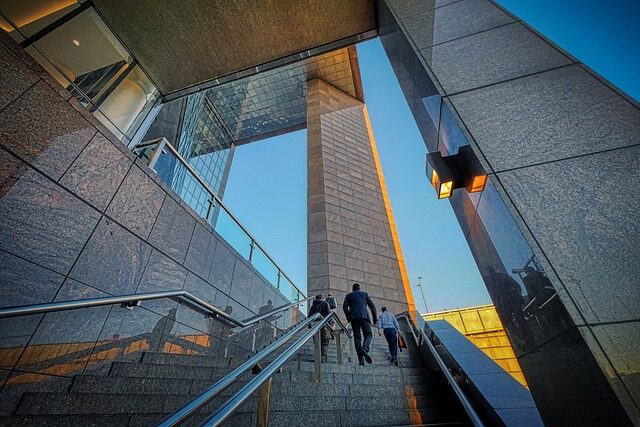Oslo, Norway’s vibrant capital, has come a long way from its early beginnings to becoming one of Europe’s fastest-growing cities. This metropolis, rooted in the rich soil of history, is a testament to the enduring human spirit of development and resilience.
From its establishment in 1048 during the Viking Age to its strategic transformations after destructive fires and periods of expansion, Oslo’s urban development history is marked by significant events and milestones that have shaped its current landscape.
- History of Oslo’s urban development
- What are the key milestones in Oslo’s urban development history?
- How did the Viking Age influence Oslo’s urban structure?
- What role did King Christian IV play in the development of Oslo?
- How did the fire of 1624 transform Oslo into Christiania?
- What are the major architectural developments in Oslo’s history?
- How has immigration impacted Oslo’s population growth?
- History of Oslo’s urban development
- What are the key milestones in Oslo’s urban development history?
- How did the Viking Age influence Oslo’s urban structure?
- What role did King Christian IV play in the development of Oslo?
- How did the fire of 1624 transform Oslo into Christiania?
- What are the major architectural developments in Oslo’s history?
- How has immigration impacted Oslo’s population growth?
History of Oslo’s urban development
The origins of Oslo can be traced back to the end of the Viking Age when it was founded by King Harald Hardrada in 1049. However, it was not until the coming of Christianity and the establishment of a merchant town that Oslo began to flourish as an urban center.
Diverse historical events, such as the devastating Black Plague, left lasting marks on the city’s development. The plague dramatically reduced the city’s population, leading to a period of stagnation that lasted until the 17th century.
The fire of 1624 was a pivotal event in Oslo’s history, prompting a complete relocation and rebirth of the city under the watchful eye of King Christian IV. This disaster offered an opportunity to reimagine the city, which was then named Christiania.
Through the 19th and 20th centuries, industrialization and urban expansion contributed to Oslo’s growth, integrating new districts and accommodating a burgeoning population. Today, Oslo is recognized for its high quality of life and commitment to sustainability.

The city’s geographical position, with its proximity to the sea and rich natural resources, has played a significant role in its historical development, particularly in its maritime industries.
What are the key milestones in Oslo’s urban development history?
- 1049: Official founding of Oslo.
- 1349: The Black Plague decimates the population.
- 1624: The great fire leads to the relocation and renaming of the city as Christiania.
- 1814: Christiania reestablishes its status as the capital of Norway.
- Late 19th century: Industrialization spurs rapid population growth and urban expansion.
- 20th century: Oslo undergoes modernization and improvements in urban planning.
- 21st century: Focus on sustainability and the integration of green spaces into the urban fabric.
How did the Viking Age influence Oslo’s urban structure?
The Viking Age left an indelible mark on the foundation of Oslo. As a strategic trading place, it benefitted from the maritime prowess of the Vikings, who established trade routes connecting Oslo with the rest of Europe.
The city’s initial layout, centered around the Akershus Fortress, was influenced by the needs of trade and defense, which were priorities during the Viking period. The settlement was built with accessibility to the sea in mind, a characteristic that has remained relevant throughout Oslo’s history.
Trade during the Viking Age laid the groundwork for the mercantile tradition that would define Oslo’s economy for centuries to come. Maritime industries born in this era helped shape the city’s character and development trajectory.
The societal structure and governance established during this time also played a role in shaping the early urban development of Oslo, setting precedents for community organization and infrastructure.
What role did King Christian IV play in the development of Oslo?
King Christian IV of Denmark-Norway possessed a grand vision for Oslo following the city’s devastation by fire in 1624. He seized this opportunity to rebuild the city under a new name, Christiania, with a modern urban structure.

He introduced a geometric street grid, designed to reduce the risk of future fires and to improve living conditions. This grid provided a framework for the city’s expansion and is still recognizable in Oslo’s central district today.
Under his reign, Christiania saw the construction of key buildings and landmarks, many of which have survived to become historical treasures and tourist attractions. His impact on the architecture and layout of the city was profound and long-lasting.
Christian IV’s emphasis on the city as a cultural and economic hub set the foundation for its future development as Norway’s capital city.
How did the fire of 1624 transform Oslo into Christiania?
The fire of 1624 was a catastrophic event that led to the almost complete destruction of medieval Oslo. King Christian IV’s decision to rebuild the city elsewhere demonstrated a bold and progressive approach to urban planning.
The new city of Christiania was constructed with wider streets and a regular block system to minimize fire hazards and facilitate trade and transportation. This design was revolutionary for its time and played a critical role in shaping the city’s future.
The change in location also signified a rebirth for the city, with a focus on modernization and resilience. The new name and structure signified a break from the past and a hopeful look towards a prosperous future.

Christiania’s construction marked the beginning of a period of growth and development that would see Oslo transform from a small town into a bustling city.
What are the major architectural developments in Oslo’s history?
Oslo boasts a rich architectural tapestry that reflects its diverse history. From the medieval Akershus Fortress to the modern Oslo Opera House, the city’s buildings tell a story of evolution and innovation.
- Akershus Fortress: A medieval castle that served as a defensive stronghold.
- Oslo Cathedral: Originally constructed in the 17th century, it has been a spiritual and cultural landmark for centuries.
- Royal Palace: Built in the 19th century as the residence of the Norwegian monarch.
- Oslo Opera House: Inaugurated in 2008, this contemporary structure symbolizes Oslo’s commitment to modernity and art.
- Barcode Project: A series of high-rise buildings, part of the modern redevelopment of the city’s waterfront.
These buildings, among others, showcase the various architectural styles that have been embraced throughout Oslo’s history, from functionalism to contemporary design, each adding to the city’s unique aesthetic.
How has immigration impacted Oslo’s population growth?
Immigration has played a significant role in shaping the demographics of Oslo. The post-World War II era, in particular, saw an influx of immigrants who contributed to the city’s workforce and cultural diversity.
The population growth in Oslo is partly attributed to global migration trends, with people arriving from various countries in search of better opportunities and quality of life. This has made Oslo one of the most culturally diverse cities in Europe.
The integration of immigrants has brought challenges but also opportunities for urban development, including the need for expanded infrastructure and services to accommodate the growing population.

As one of Europe’s fastest-growing cities, Oslo continues to adapt and evolve, embodying a blend of tradition and innovation influenced by its diverse inhabitants.
For an insightful look into the evolution of Oslo’s urban landscape, watch this informative video:
Oslo’s history is a compelling narrative of transformation, resilience, and growth. From its early days as a Viking settlement to its current status as a bustling modern capital, Oslo’s urban development history offers a deep dive into the factors that have shaped its identity. The harmonious blend of historic charm and forward-thinking urban planning continues to attract visitors and settlers alike, making Oslo a quintessential example of a city that honors its past while boldly embracing the future.

